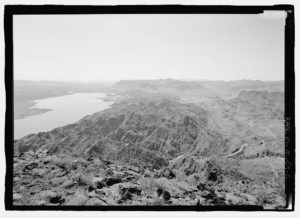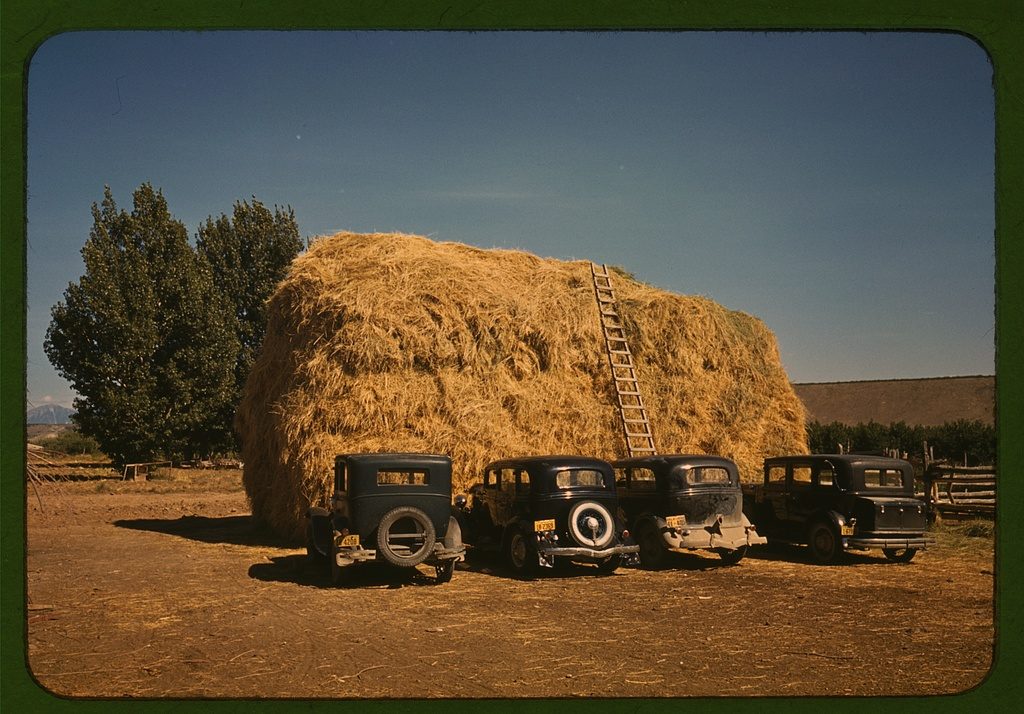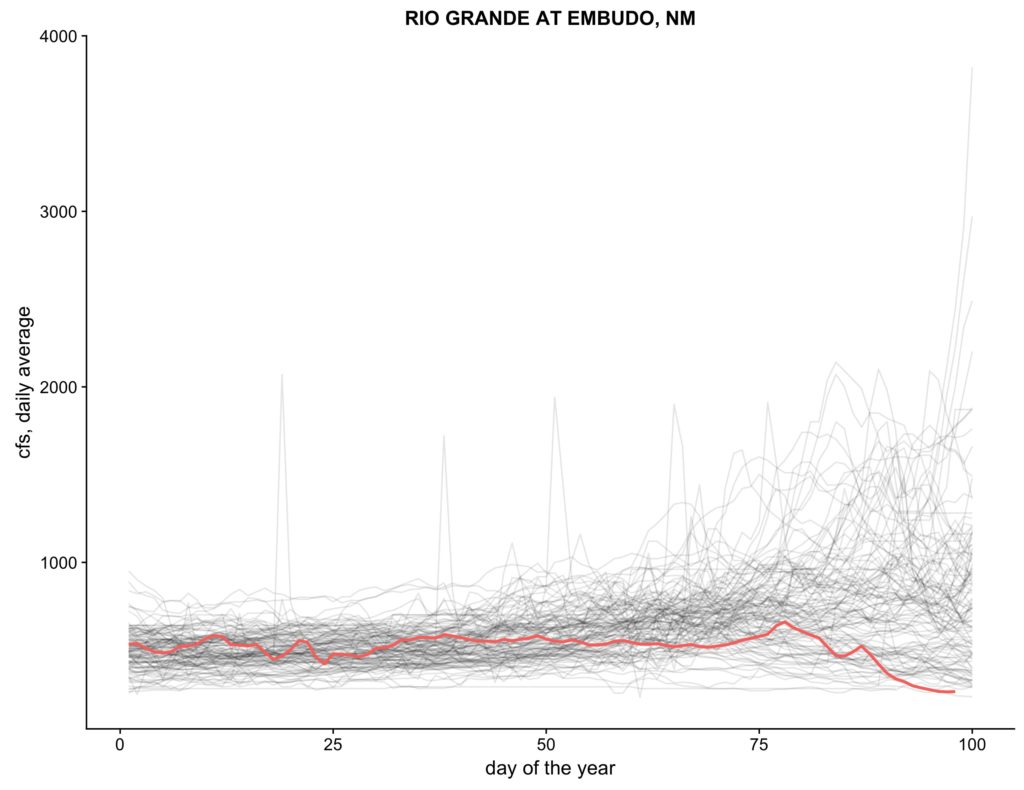It’s reasonable to ask whether the fracas over Colorado River water management, which has pitted the Central Arizona Project against just about everyone else in the basin, is evidence that the thesis of my book – that we are in an era of unprecedented collaboration in Colorado River governance, that water is not really for fighting over – was wrong.

Lake Havasu and the Colorado River, courtesy Library of Congress
I think it’s the opposite. There would have been a time when it would have simply been assumed that of course the Central Arizona Project would optimize its water orders (a smart friend has steered me away from some of the more incendiary language I had used – “manipulated” or “gamed”) to maximize releases from Lake Powell. The uproar this month is striking precisely because the uproar is happening at all – that in a new era of collaboration, what CAP was doing is an offense to a new cooperative, collaborative norm.
In the “Contemporary Issues In Water Management” class we co-teach (still accepting applications for fall 2018!), my faculty colleague Bob Berrens spends a good deal of time helping students understand a subtle definition of what we mean by “institutions”:
Institutions: The rules, both formal and informal, that both liberate and constrain behavior in repeated choice interactions.
It was a bit of a challenge for me initially to get my head around this when Bob and I began teaching together five years ago, but our ongoing conversation about this issue in the end provided a key piece of the intellectual infrastructure for my book Water is for Fighting Over: and Other Myths about Water in the West.
Claudia Williamson does a nice job of summarizing the thing in this 2009 paper (for “development” in her sentence below, substitute “successful Colorado River Basin water management”):
Formal institutions represent government defined and enforced constraints while informal institutions capture private constraints. The findings suggest that the presence of informal institutions is a strong determinant of development. In contrast, formal institutions are only successful when embedded in informal constraints.
Central to my book’s myth-busting argument (Water! For Not Fighting Over!) is the evolution in the Colorado River Basin of institutions along two parallel and simultaneous paths. On the formal path, the “government defined and enforced constraints”, you’ll find the big written rule sets developed over the last two decades – the 2001 Interim Surplus Guidelines and the 2007 Colorado River Interim Guidelines for Lower Basin Shortages and Coordinated Operations for Lake Powell and Lake Mead. They were the first two major pieces added to the “Law of the River” since 1968, and they grew out of a process of collaboration and compromise. In parallel to that we have the evolution of what in Bob’s framework we describe as informal rules – norms of behavior that have come to be viewed as the way problems are now solved in the Colorado River Basin. They involve collaboration and effort at shared problem solving – crucial informal norms that allowed the more formal rule sets to be developed.
This is the key to understanding the letter representatives of the Upper Basin states sent to Arizona two weeks ago, triggering the fracas:
This is why pretty much everyone in the basin, including folks in California and Nevada as well as many within Arizona itself, have lined up against the Central Arizona Project’s position on this issue – because CAP’s brazenly public endorsement and defense of a process of managing water orders to maximize releases from Lake Powell, while within the formal rules, violated widely held informal norms of collaboration on efforts to solve the Colorado River’s problems.
Here’s University of Colorado Boulder Colorado Basin scholar Doug Kenney’s explanation in a piece by Luke Runyon and Bret Jasper:
“The [enforcement] mechanism is usually a social mechanism,” Kenney says. “And the mechanism is all of the other parties get in your face and say, ‘Hey, come on. This isn’t really the spirit of what we’re doing here, let’s get back to working cooperatively.’”
Faces will be gotten into next week at a meeting of Arizona and Upper Basin folks in Salt Lake City.


